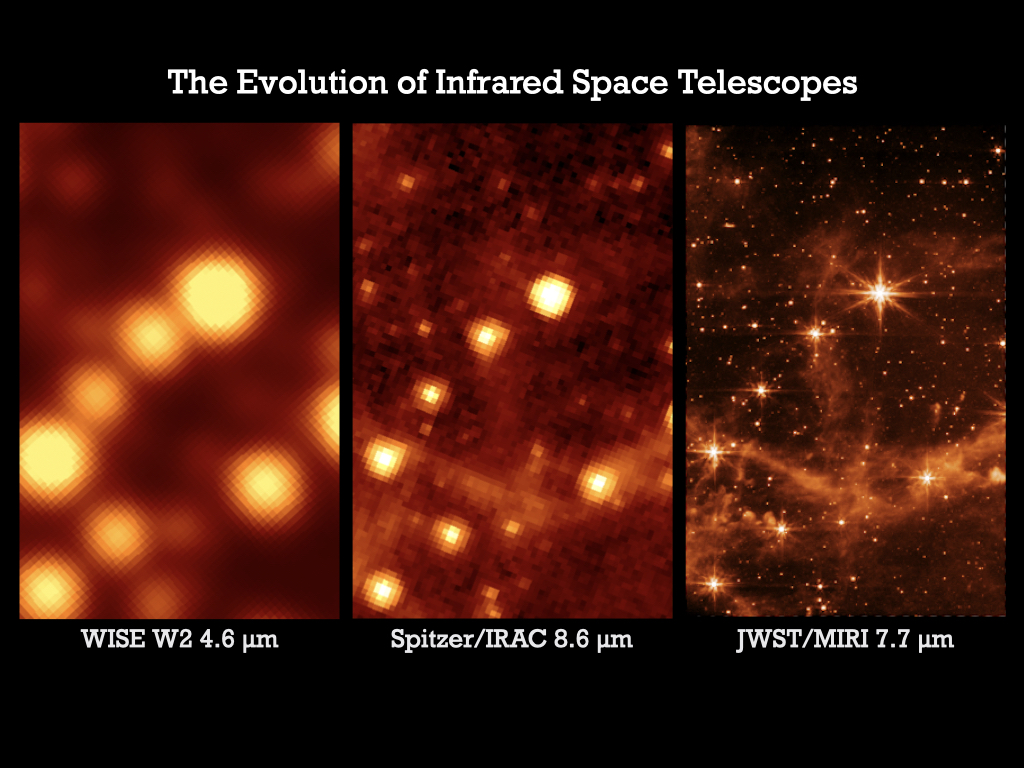The James Webb Space Telescope is now at the final stage of calibration before it begins to work fully for the benefit of science. But even at the stage of focusing, it has already impressed the scientific community with its capabilities when it sends photos of the remote depths of our cosmos. These test images give an initial idea of how powerful JWST will be and how much infrared astronomy will improve. Engineers say that the optical characteristics of the JWST turned out to be better than the most optimistic predictions, and astronomers are beside themselves with excitement.

Being in an intolerable expectation, astronomers began to publish comparative images of JWST with other telescopes that show the evolution of improving the resolution of the visible cosmos. Astronomer Andras Gaspar, who works with the MIRI mid—infrared instrument on board the JWST, compiled images of the WISE telescope (Wide Infrared Survey Explorer) with the image of the JWST of the same field of view — the Large Magellanic Cloud, a small moon galaxy of the Milky Way. Then it made the same comparison with a photo taken by Spitzer.

How awesome is JWST/MIRI? Well, let’s compare the latest press release image to that of the WISE all-sky survey at 4.6 microns. This is the closest wavelength image I could find. Spitzer IRAC would have been better (slightly higher resolution and similar wavelength). pic.twitter.com/EXqP57sULt
— Andras Gaspar ???????????? (@AndrasGaspar) April 29, 2022
“WISE with its 40 cm telescope is half the size of Spitzer (85 cm). But both are tiny compared to the 6.5-meter giant JWST. That’s what you end up getting with a large aperture — higher resolution and sensitivity!” explains Gaspard.
Astronomers and engineers seem to be amazed at how high the sensitivity of the JWST turned out to be. Other scientists also joined in and shared similar comparisons:
Not quite enough distant background galaxies for my taste, but #JWST is looking ever more awesome! pic.twitter.com/pyJ8VH4fUo
— gbrammer (@gbrammer) April 29, 2022
Since #JWST‘s MIRI is getting lots of before-and-after love, I thought I’d do the same for the Fine Guidance Sensor: here’s one of its two fields in the Large Magellanic Cloud as previously imaged in the near-IR by @eso‘s VISTA survey telescope.
— Mark McCaughrean (@markmccaughrean) April 30, 2022
It is expected the first official images from James Webb, taken using all the capacities of the telescope, will appear in July.
Earlier, NASA wanted to rename James Webb due to the ambiguous past of the man in whose honor the telescope is named.
Follow us on Twitter to get the most interesting space news in time
https://twitter.com/ust_magazine
